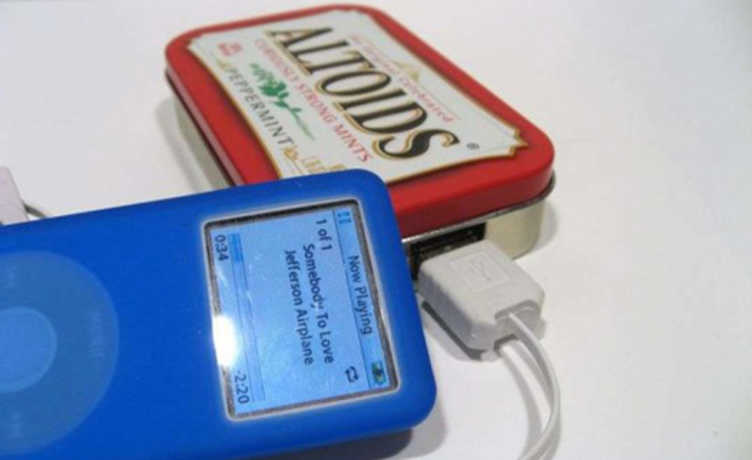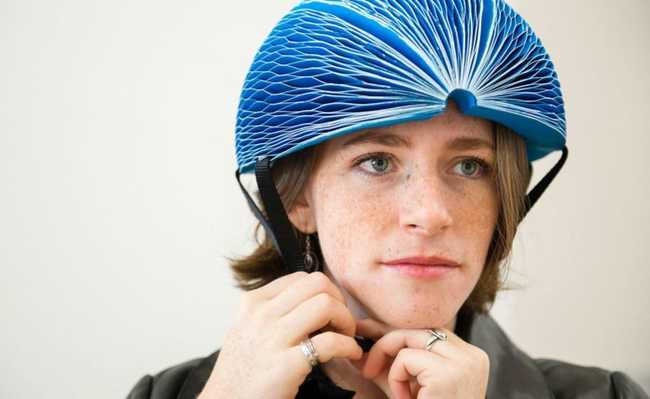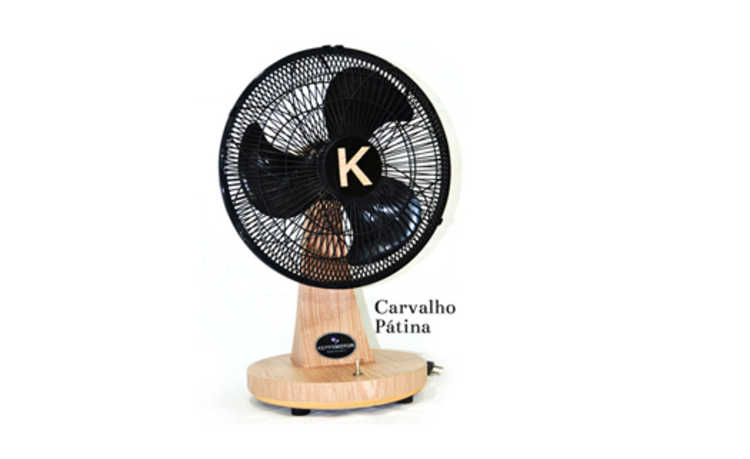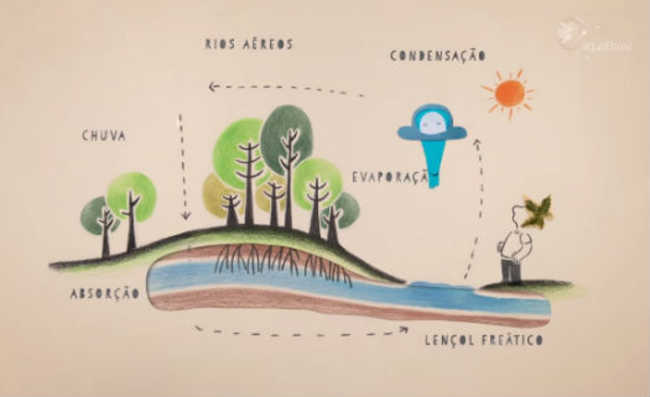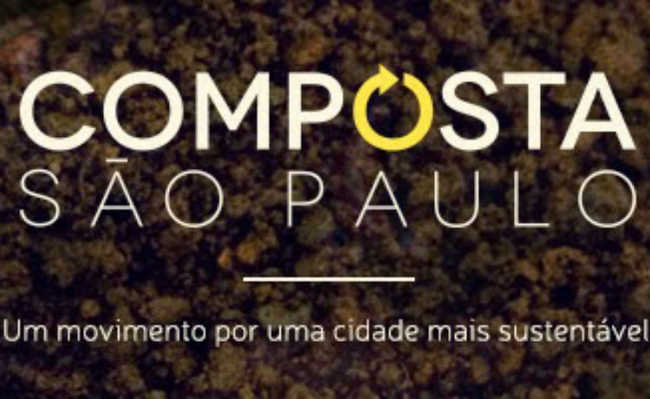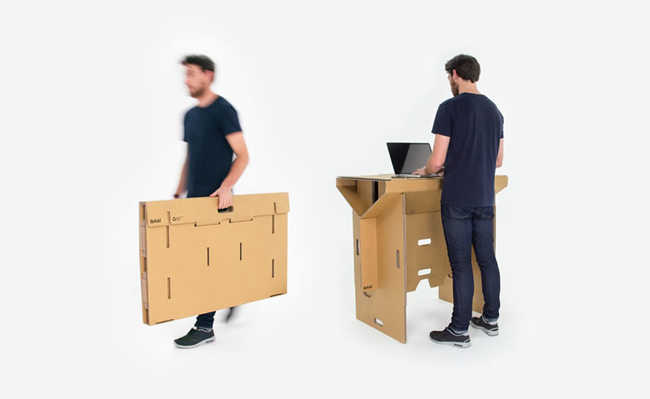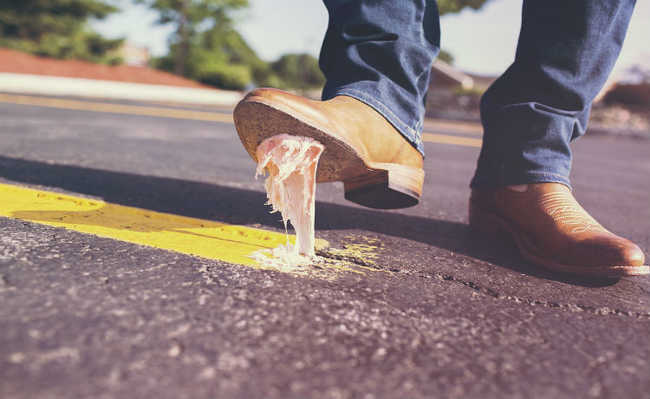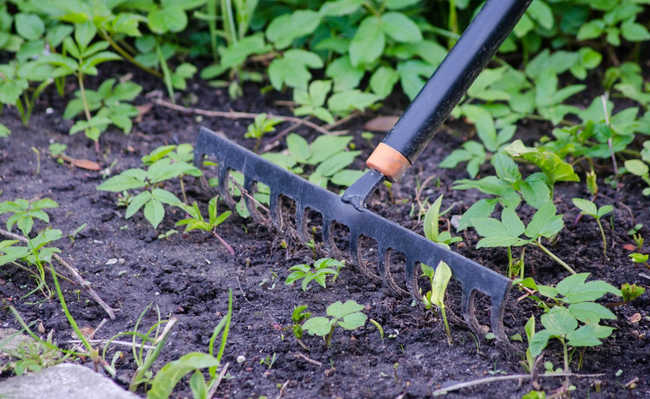Disposable cup: impacts and alternatives
Understand the impacts of using the disposable cup and learn about reusable alternatives
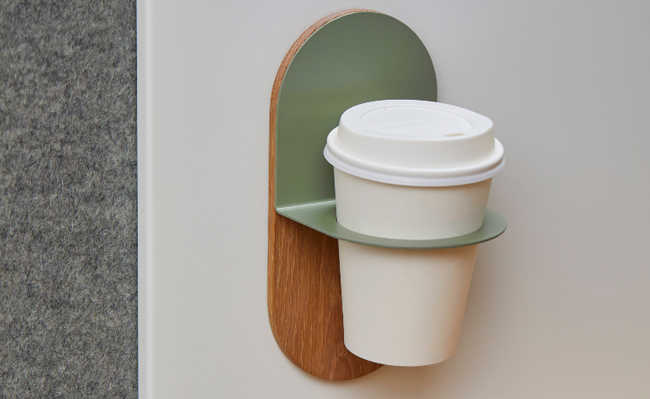
Edited and resized ROOM image is available on Unsplash
Widely used in Brazil when drinking coffee or water, the disposable cup is often seen as synonymous with water saving and practicality, but the issue is more complicated than it seems when we assess the impact of disposable cups from an environmental point of view. There are several types of disposable cups, but the most popular are the plastic cups, which contribute to the accumulation of plastic waste in the world.
- How to recycle plastic cups
The consumption of disposable cups is usually not very common in homes, except at parties and events, so that most of the production is used in environments such as offices, factories, public offices, commercial establishments or other places and occasions that involve concentration of people (like big events). And it is precisely these places that, in general, present the greatest difficulties for washing reusable containers after consumption. In general, disposable cups are disposed of in specific dumps to be collected by waste management companies. Still, the volume of this type of material is relevant.
We know that plastic, for example, is the urban solid waste with the greatest potential for recycling in the world. Brazil produces around 100,000 tons of plastic cups per year, but unfortunately the disposal practices adopted do not satisfactorily explore the potential for recycling the product, so that large amounts of disposable cups end up in landfills (in the case of cities that have this type of installation) or, unfortunately, are improperly disposed of in the environment.
- What is Municipal Solid Waste?
The common plastic cup model is practically synonymous with a disposable cup - but you can find disposable plastic cups made from other materials.
Types of Disposable Plastic Cups

"Plastic Cups of Water" edited and resized image by Steven Depolo, licensed under CC BY 2.0
PS or polystyrene
Extracted from petroleum, polystyrene is a homopolymer resulting from the polymerization of styrene monomer. It is still the material used in most disposable cups in Brazil and is identifiable through the triangular symbol indicating its recyclability, with the number "6" inside and the letters "PS" underneath. Among its main features are full recyclability, low resistance to organic solvents, heat, weathering and fracture - PS plastic cups are more susceptible to breakage than PP ones.
PP or polypropylene
Polypropylene is a thermoplastic derived from propene, identified by the triangular symbol of recyclability, with the number "5" inside and the letters PP underneath. It is fully recyclable and, compared to PS, it has greater resistance to bending or fatigue fracture, greater chemical and solvent resistance, good thermal resistance and transparency.
EPS or expanded polystyrene
Best known in Brazil by the commercial name of Styrofoam, expanded polystyrene is a derivation of PS. It is a molded polystyrene foam, consisting of an agglomerate of granules and widely used for the production of thermo cups. This material is identified by the triangular recyclability symbol, with the number "6" inside and the letters "PS" underneath. It is completely recyclable, waterproof, has high resistance to the passage of steam, allowing it to maintain its properties, as well as those of packaged products, unaltered; it is thermal insulating and has low specific weight.
In addition to the disposable cup models listed above, there are also paper cups.
What is the best option in environmental terms?
Using a disposable cup or opting for a reusable one: which is better? There is no simple answer to this question and it is necessary to identify the critical issues associated with the use of each type of container, whether disposable (in its various forms) or reusable (which also feature many models). Every product synthesized by humans and unknown by nature has the potential to cause some environmental damage. Different analyzes will point out points for or against both options.
Among the possibilities, against plastic cups (disposable or not) there is the argument that their raw material is made from petroleum. In the specific case of the disposable cup, the criticism is in terms of the waste that its use provides and the low recycling rate of this material in our country, causing environmental problems and an increase in plastic waste.
In the case of reusable cups and options, there is an impact related to the consumption of water for washing or even chemical residues from detergents associated with their cleaning process, which are potential causes of pollution. What needs to be taken into account are energy, water and carbon emissions costs in its production, distribution and disposal processes.
In order to know which is the best option for each case, the assessment of the products' life cycle can help a lot. Below, take a look at information about the most commonly used types of disposable cups and their problems, as well as alternatives that contribute to reducing their impacts.
Disposable cups
PS and PP plastic cups
One of the disadvantages of the disposable cup is the material from which it is made. Coming from the refinement of petroleum, plastic disposable cups are made from one of its fractions, naphtha, a liquid substance very similar to gasoline. The product's ecological footprint starts at this point, with carbon being released during oil refining; then, the water, electricity and carbon released in the production process enter the bill; transportation; and the lifetime. The manufacture of plastic cups causes the emission of CO2 and other gases responsible for the imbalance of the greenhouse effect, one of the ways of human contribution to the planet's warming process (know the pollutants emitted into the atmosphere and how to neutralize them).
And it's not just these issues at stake. A survey by the Institute of Chemistry of the Federal University of Bahia (UFBA) pointed out that disposable cups specifically made from polystyrene (PS) - usually those white and more fragile looking like those in the photo at the beginning of the article - when they enter contact with a hot substance (such as coffee or tea) can release an amount above what is considered safe by the Ministry of Health of a substance called styrene, known by the International Agency for Research on Cancer (IARC) as a possible carcinogen, also capable of providing others ailments such as headaches, depression, hearing loss and neurological problems (read more about Styrofoam impacts and recycling). Polystyrene can be recognized by the triangular recyclable symbol with the number “6” placed inside the letters “PS”.
Although their physical characteristics make them fully recyclable, the components involved in the production of disposable cups are very cheap, which can make recycling more expensive than the production of new items. Due to its extremely light nature (cooperatives pay collectors per kilogram received) and the fact that they occupy a very large volume for light weight, the return ends up being very low for collectors, cooperatives and recyclers. In addition, it is a material that hardly reaches the cooperatives clean, which can harm recycling. Washing items before disposal is also not a sustainable solution, as, in addition to using water for washing, they would lose their main practical advantage (learn more about recycling plastic cups).
In contrast, a study prepared by ACV Brasil, a sustainability consultancy specializing in the technique of evaluating the life cycle of products, points out that plastic cups have better performance in the use of water and energy. The study aimed to compare the reusable ceramic cup (200 ml and 190 g), the reusable glass cup (200 ml and 115 g), the reusable PP plastic cup (200 ml and 20 g) and the cup Disposable PP (200 ml and 1.88 g) - in the analysis, the use in the corporate environment was taken into account, in which each disposable was used twice before disposal and in which reusables were also used twice before washing .
For manual cleaning, it was estimated the use of 1.2 liters to 1.7 liters of water per cup washed manually (direct consumption). Among the conclusions reached, the following stand out: the fact that the disposable cup consumed less water from its production to its disposal and recycling than reusable cups, indicating that, for the latter, the water used in washing represents, on average, 99% of the total water of its life cycle; that the energy used in the mechanical washing of reusables (dishwashers) is approximately 2.4 times greater than the energy used in the life cycle of disposable cups; greater environmental impact in the use of the reusable cup with manual washing compared to the use of the disposable cup.
The work attests that the difference in performance between mechanically washed reusable plastic cups and disposable cups is too small to be a conclusive statement in an assessment of the total environmental impacts of the life cycle. The study was reviewed by KPMG, a company specialized in auditing and consulting services. It is an important result, which breaks paradigms installed in the consumers' perception. It is necessary to wait for further studies that may also contemplate disposable plastics based on PS polystyrene, still the material most commonly used in our daily lives for such purposes, the consideration of disposal after a single use and the effect of not recycling most of the disposable material, as well as its undue dispersion in the environment, an unfortunate reality that we are faced with.
The biggest problem, therefore, is related to the lack of information on the part of the population regarding the effects of incorrect disposal of these materials, which causes environmental pollution, the most worrying of which is ocean pollution, harmful to the aquatic environment and marine life. Understand the size of the problem, noting that the characteristics of such materials determine their permanence in the environment for a long time, taking about 100 years for their total decomposition.
paper cups

Image edited and resized der Element5 Digital, is available on Unsplash
It may seem surprising, since we associate paper with sustainability, but many disposable cups aren't made from recycled paper - most of them are made from virgin paper. There are two reasons for this: one is that, for reasons of hygiene, regulatory bodies do not allow recycled material to come into direct contact with food and beverages; the other is that recycled paper cannot support the storage of liquids on its own.
During the manufacturing process, cups are usually coated with a plastic resin called polyethylene. This polycarbonate helps keep beverages warm and prevents the paper from absorbing liquids or leaking them. The necessary application of plastic resin, however, makes the paper cup recycling process complex and excludes its biodegradability. In other words, each paper cup that contains this resin will, at best, go to landfills. The impossibility of recycling it imposes the immediate decomposition process in such environments and the consequent release of methane, a gas that contributes to the imbalance of the greenhouse effect.
The process of producing paper cups requires the extraction of trees to obtain wood and the use of machines that transform the wood into chips, which will then be processed into paper. It is a process that requires a lot of energy, water and a raw material in danger and whose extraction, if not certified, causes serious consequences (such as desertification, loss of fauna and flora biodiversity, increase in the greenhouse effect and filling of rivers and lakes) . Therefore, when consuming this type of material, be aware of the certification seals that point to its origin from raw materials from reforestation trees (pine and eucalyptus), planted precisely with the purpose of supplying the production process of Paper And Cellulose.
Biodegradable and compostable paper cups have grown as an interesting alternative for situations where a disposable solution is the only option. It is worth mentioning, however, the still small scale and the fact that, in order to be effectively composted, these cups must be processed in a commercial composting facility, a reality that is still distant in the domestic market. To those who ask if these cups could be decomposed in domestic composters, the answer is unfortunately no. And, to make matters worse, they should be separated earlier, as there is no visual cue that differentiates compostable from non-compostable cups, which means, in practice, that both, in case they are not sent for recycling, should, by while having as destination, at best, the sanitary landfills.
- Brazilian company produces compostable disposable cup
EPS plastic cups (expanded polystyrene) or simply Styrofoam

"Boey.styrofoam.cup.22" edited and resized image of hahatango, is licensed under CC BY 2.0
According to a study carried out by the Federal University of Rio Grande do Sul (Ufrgs), around 2.5 million tons of Styrofoam are consumed annually worldwide. In Brazil, consumption is 36.6 thousand tons, about 1.5% of the total.
EPS styrofoam cups have characteristics similar to those of PS and PP plastic cups, as they are also plastic, whose origin is common to them as petroleum derivatives. In the case of Styrofoam, which is made of polystyrene, it gained popularity for its light weight, thermal insulation and padding, being widely used in the food and service industry.
The environmental impact of Styrofoam is relevant. Basically, it has the same recycling problem as traditional disposable plastic cups, that is, because it is light, a large amount of the material is needed to make it economically attractive, which results in greater volume, making logistics more difficult. With this, the collectors of recyclable materials avoid it, giving preference to other types of material that bring them greater return. It can be washed and reused, but unfortunately, in practice, this hardly ever happens.
It is not biodegradable, it is resistant to photolysis, or to the breakdown of materials by photons (the action of light). All of this, combined with its lightness and its characteristic of floating, determines, in cases of inadequate disposal, it determines risks associated with its accumulation in river beds, coasts and seas around the world (learn more about the pollution of our oceans).
Because it has styrene, it presents the same risks in its inadequate combustion, such as irritation to the skin, eyes or respiratory tract, and chronic exposure can lead to effects on the nervous system, such as depression, headache, fatigue and weakness.
Unlike pure paper cups, Styrofoam cups are not biodegradable and, if not recycled, will remain intact for hundreds of years in landfills; and if not properly disposed of, they may be dispersed throughout the environment.
But what to do?
There is no reason to panic as there are alternatives. For many experts, the solution is reusable. By making the choice to reuse something, you are actively reducing your environmental footprint and failing to encourage the consumption cycle that is so bad for the environment (Check out tips for recycling, reusing or donating consumer items).
Generally, the manufacture of reusables can generate greater environmental impact than disposable cups. However, the impact diminishes over time the cup is reused.Every reusable has a point where it becomes more environmentally friendly than the disposable. A study by environmental engineer Pablo Paster shows that, after 24 uses, a stainless steel mug settles its footprint in relation to paper cups, for example.
In addition, the reuse of cups and mugs helps the pockets of both the consumer and the business. According to a study by the American coffee shop Starbucks, the company was able to save a million dollars a year by implementing reusables. See below a range of alternatives, their advantages and disadvantages, let's go to some options:
Reusable Options
plastic bottles

Edited and resized image from ClassicallyPrinted is available on Pixabay
Reusable plastic bottles have many advantages, such as low price, lightness and ease of washing; and have a smaller environmental footprint compared to disposable cups, however, some models still have BPA in their composition and can release toxins during use (learn more about the dangers of reusing plastic water bottles and about BPA).
The plastic bottle may not be the best choice among the reusable ones, but if you decide to buy one, make sure it's BPA-free (or BPA-free).
And like the plastic cup, there is the issue of possible recycling of the bottle, whose disposal is often done wrongly, failing to take advantage of the wealth that the material preserves in relation to reprocessing and reuse as raw material for new objects (read more on the recycling of plastics).
Therefore, when opting for a plastic bottle to accompany you in your daily life, make sure that it is properly disposed of as recyclable, once its functional utility is exhausted.
Aluminum

Edited and resized image of Renespro is available on Pixabay
This type of bottle does not face the same problems as plastic when it comes to disposal, since aluminum is recycled on a large scale in Brazil and its bottles are 100% recyclable. Another advantage is the lightness, which makes this a more practical option as well.
On the other hand, the bottle is not very resistant and can be easily crushed. Research shows that some models have an inner lining that can contain BPA, so be aware of this fact when purchasing this bottle model.
Aluminum extraction is a process that has a significant energy expenditure, however, a large part of the aluminum used today is recycled, which means less demand for raw material extraction.
Stainless steel

"Is this really the better bottle?" edited and resized image by michael pollak, is licensed under CC BY 2.0
More durable, stainless steel bottles offer several advantages. There is no risk of poisoning by chemical compounds, as with models made of plastic or aluminum, they are more hygienic and can be mechanically washed in the dishwasher.
In contrast, they heat up easily, making them unsuitable for carrying cold drinks. Also, they are expensive and can dent if dropped.
Ceramics

Edited and resized image by Nicole Köhler, available nor Pixabay
Ceramic cups must reach very high temperatures to be made, but they can be reused thousands of times. Can be placed in the microwave and freezer. However, they are fragile and need to be handled with care to have a long life. Another disadvantage is that, in case of breakage, the ceramic waste is difficult to be recycled, being seen as undervalued scrap - it is possible to reuse shards making decorations or crafts.
Glass
And we come to the most common reusable cup. The good thing is that glass does not have any trace of substances that can present itself as toxic to the user, it is made from abundant natural resources, its production does not cost as much energy as metal and plastic. , can be infinitely recycled and maintains the flavor and temperature of the drink. Its disadvantages are its fragility and considerable weight, which end up affecting its practicality when you want to take the container elsewhere (learn more about the types of glass and its recycling).
Reusable plastic cups
Possibly the most convenient option among those listed so far. Choosing a good polypropylene (PP) cup may present itself as a resistant alternative for daily use and compact for transport (does not take up much space in bags and backpacks). Its material is fully recyclable, and for this, at the end of the life of your cup, guarantee its disposal as such. By following the tips suggested in the product life cycle analysis study offered throughout this article, it will be possible to considerably reduce the environmental impact during the use of your container: logically following the common sense that good hygiene recommends, try to use it as many times as possible (at least twice) before washing. It is recommended that cleaning be mechanical (washing machines) and made with biodegradable ingredients. When choosing your cup, make sure it is a BPA-free (or BPA-free) model. Check below some models of polypropylene plastic cups with these characteristics:
KeepCup pencil case
They are not materials, but products that combine some of them. O KeepCup is a reusable cup that comes in two versions, glass and plastic.
The glass version has almost all the pros and cons mentioned in the glass cup, but it promises to be more resistant and uses a cork strip to prevent you from burning yourself in the heat of the drink.
The plastic version is different from other bottles on the market. O KeepCup it's made from a friendlier plastic, polypropylene. It is a BPA and styrene free plastic solution, has low cost, high strength, good thermal stability and, due to its flexibility, can be recycled and, due to its size and presentation, can be carried and handled daily without difficulties.
The Stojo, also known as the Smash cup, is a retractable retractable cup also made from polypropylene and silicone, like KeepCup, and is free of BPA, styrene or other toxins. It is practical, resistant and, as it is made of polypropylene, it has good thermal stability.
Reusable cups like KeepCup and Stojo are ideal for use at work, at home and even in cafeterias. Just give your glass to the barista and ask him to fill it, saving disposable cups and helping the environment.
In the end, it's up to you to weigh the pros and cons of each material with price, durability, environmental impact and context of use in mind.
To understand a little more about the evils of the disposable cup, take a look at the video.

